CE Non-Bias Report
CE Nonresponse Bias Report - Final.doc
The Consumer Expenditure Surveys: The Quarterly Interview and the Diary
CE Non-Bias Report
OMB: 1220-0050
Assessing nonresponse bias in the CE Interview Survey:
A summary of four studies
by Boriana Chopova, Jennifer Edgar, Jeffrey Gonzalez,
Susan King, Dave McGrath, and Lucilla Tan
Team sponsors: David Swanson and Karen Goldenberg
August, 2008
Table of Contents
I. Introduction and Approach 1
II. Methodology: Common approaches across studies 2
c. OMB nonresponse bias equation 5
a. Comparison of response rates across subgroups 8
b. Comparison of the Interview Survey respondents to external data 11
c. ‘Harder-to-contact’ respondents as proxies for nonrespondents 14
d. Pattern of Participation while in Sample 19
IV. Findings across studies 23
b. Characteristics of nonrespondents 23
c. Estimates of relative nonresponse bias for expenditure categories 24
Appendix A. Expenditure Examples for the Aggregated Expenditure Categories 30
Appendix B. Study limitations 31
Executive Summary
The Consumer Expenditure Interview Survey (Interview Survey) is a nationwide survey conducted by the U.S. Bureau of Labor Statistics to estimate the expenditures made by American households. The response rate for the survey has varied between 74.5 and 78.6 percent over the past six years. In 2006, the Office of Management and Budget (OMB) issued a directive for any household survey with a response rate below 80 percent. The directive requires an analysis of nonresponse to determine if the data are missing completely at random (MCAR), and another analysis to estimate the amount of nonresponse bias in the survey’s estimates.
This report is a synthesis of four studies undertaken to respond to OMB’s directive for the Interview Survey. The four studies are:
a comparison of response rates between subgroups of the survey’s sample;
a comparison of respondent demographic characteristics to those of the American Community Survey (ACS);
an analysis of nonresponse bias using ‘harder-to-contact’ respondents as proxies for nonrespondents; and
an analysis of nonresponse bias using intermittent respondents and attritors (survey dropouts) as proxies for nonrespondents.
These four studies were designed to answer three questions: (1) Are the data in the Interview Survey MCAR? (2) What are the demographic characteristics of the nonrespondents? and (3) What is the level of nonresponse bias in the Interview Survey?
All four studies addressed the MCAR question, and concluded that the data in the Interview Survey are not MCAR. Characteristics of nonrespondents were examined using frame variables, ACS data, and proxy nonrespondents. Collectively, these studies showed that blacks are under-represented among the respondents, and those over 55 years old are over-represented.
Estimates of nonresponse bias could only be calculated in two of the four studies. These studies identified subgroups of the survey’s sample that were thought to exhibit the same behavior and characteristics as nonrespondents, and then used them as ‘proxies’ for nonrespondents. Using the mean expenditure estimates from the survey’s respondents and these proxy nonrespondents, nonresponse bias was computed for total expenditures as well as thirteen expenditure subcategories, ranging from regular monthly expenses such as housing payments to infrequent and highly variable expenses such as those for education. Neither study showed evidence of nonresponse bias for total expenditures. For the thirteen subcategories, there was little meaningful or consistent bias found across the studies. As a result, the Interview Survey seems to provide a counterexample to the commonly held belief that if a survey’s missing data are not MCAR then its estimates are subject to nonresponse bias. In conclusion, nonresponse bias does not appear to be a significant issue for the Interview Survey.
The Office of Management and Budget (OMB) is concerned with the decreasing unit response rates in household and establishment surveys. To address this concern, OMB (2006) issued new standards and guidelines for federal statistical surveys. These guidelines require that, for any survey with a response rate below 80 percent, the data be analyzed to determine whether the missing values are ‘missing completely at random’ (MCAR), and that an estimate of the nonresponse bias be made using a specific formula.
The Consumer Expenditure Interview Survey (CE) is a nationwide household survey conducted by the U.S. Bureau of Labor Statistics (BLS) to estimate the expenditures made by American households, and it is one federal statistical survey that has a response rate below 80 percent. The response rate for the Interview Survey ranged from 74.5 percent to 78.6 percent between collection years 2002 and 2007. The Interview Survey is a rotating panel survey in which approximately 15,000 households are visited each quarter of the year, and each household is contacted for an interview every three months for five consecutive quarters. Expenditure information from the first interview is not used in the CE’s published estimates. Instead it is used only for inventory and ‘bounding’ purposes, which addresses a common problem in which survey respondents tend to report expenditures to have been made more recently than they were actually made. Only expenditure information from the second through fifth interviews is used in the published estimates.
To evaluate nonresponse bias in the Interview Survey, four studies were completed: a comparison of response rates between subgroups of the survey’s sample; a comparison of socio-demographic characteristics to an external data source (the American Community Survey, or ACS, was used); an analysis of nonresponse bias using ‘harder-to-contact’ respondents as proxies for nonrespondents; and an analysis of nonresponse bias using intermittent respondents and attritors (survey dropouts) as proxies for nonrespondents. These studies were designed to answer the questions: (1) Are the data in the Interview Survey MCAR? (2) What are the demographic characteristics of the nonrespondents? and (3) What is the level of nonresponse bias in the Interview Survey?
The first step in most nonresponse bias studies is to address the MCAR question. Data are said to be ‘missing completely at random’ if the mechanism that produces the missing values is unrelated to the values of the data themselves (Little and Rubin, 2002). More precisely, data are ‘missing completely at random’ if their pattern of ‘missing-ness’ is independent of the data’s actual values and the values of any other variables. The MCAR question is important because nonresponse bias is often associated with the data not being MCAR. One common method of determining whether the data are MCAR is to examine differences between respondents and nonrespondents on variables that are collected for both groups and that are also associated with the values of the survey data. Any differences suggest that the missing data may not be MCAR. Frame and stratification variables are frequently used to test for MCAR in this approach (e.g., Brick & Bose, 2001; Dixon, 2001; 2004; Duncan & Hill, 1989; Pearl & Fairley, 1985; and Purdie et al., 2002). Another common approach is to compare characteristics of respondents to characteristics of an external population. Again, differences between the two groups suggests that the missing data may not be MCAR. The first two studies followed these approaches, but all four studies included MCAR analyses.
After the MCAR question is answered, the next step is to estimate the amount of nonresponse bias in the survey’s estimates. Since by definition no data are collected from nonrespondents, one approach to doing this is to partition the respondent sample into subgroups that exhibit different nonresponse bias characteristics (Groves, 2006), and then select one of the subgroups to serve as ‘proxies’ for the nonrespondents. Once a set of proxy nonrespondents is selected, a dataset can be created with expenditure and socio-demographic information that is representative of the nonrespondents, and the level of nonresponse bias can be estimated. The third and fourth studies in this report use this approach. The third study uses ‘harder-to-contact’ respondents as proxy nonrespondents. It draws on a theory known as the ‘continuum of resistance’ in which sample units are ordered by the amount of interviewer effort exerted to obtain a completed interview, and those requiring the most effort are chosen to serve as the proxy nonrespondents (Groves, 2006). The fourth study uses intermittent respondents and attritors as proxy nonrespondents. In both of these studies nonresponse bias was computed for total expenditures and thirteen expenditure subcategories, ranging from regular monthly expenses such as housing payments to infrequent and highly variable expenses such as those for education.
II. Methodology: Common approaches across studies
a. Data
For comparability of results, the four studies used a common data file for analysis. This common file includes 15 months of data, from April 2005 through June 2006. Data on respondent contacts for two of the studies come from the Contact History Instrument (CHI),1 which were not available before April 2005, and the latest expenditure data available at the start of this research was through June 2006.
The unit of analysis in these studies is the consumer unit (CU), which in most cases is a household.2 The common data file consists of one record per wave (or interview) per CU for waves 1, 2, and 5. 3,4 In each record, there were CU-level variables as well as variables for respondent characteristics.5 The sample size of the common data file is shown in Table 1.
Table 1. Sample size of common data file by wave
Wave |
Completed Interview |
Type A Noninterview |
Total Eligible Cases |
|||
Refused |
No one Home |
Temp Absent |
Other |
|||
1 |
9,795 |
1,640 |
459 |
166 |
391 |
12,451 |
2 |
9,432 |
2,017 |
407 |
138 |
378 |
12,372 |
5 |
9,547 |
2,225 |
279 |
100 |
354 |
12,505 |
Total |
28,774 |
5,882 |
1,145 |
404 |
1,123 |
37,328 |
Records for other CU members were added to the common data file for member-level analyses in the second study, Comparison of the Characteristics of the Interview Survey Respondents to External Data.
Variables collected in the CHI were added to the common data file for analysis in the third study, ‘Harder-to-Contact Respondents as Proxies for Nonrespondents.’ These variables provide information about the number of times an interviewer contacted the CU prior to completing the interview.
Several studies required wave 1 demographic data. Since wave 1 is primarily a bounding interview and is not used in published estimates, the data are not subjected to the regular cleaning, editing, and variable creation activities that are performed on data in waves 2 through 5. To use these data in the common data file, wave 1 demographics were processed following the production specifications used in waves 2 through 5. Slight modifications were necessary for race and housing tenure (owner or renter) variables. The values for race and housing tenure created for this series of studies were tested against those generated from production data for waves 2 through 5. For each wave, the match rates between the created code and the production code for race and tenure were over 99%, while the match rates for the size of the CU ranged from 85% to 89%.
b. Weighting
The Interview Survey sample design is a nationwide probability sample of addresses. Most addresses have one CU living there, but some addresses have more than one CU. Each interviewed CU represents itself as well as other CUs and therefore must be weighted to properly account for all CUs in the population. The U.S. Census Bureau selects the sample and provides the base weights, which are the inverse of the CU’s probability of selection. Each CU in a Primary Sampling Unit (PSU)6 has the same base weight. BLS makes three types of adjustments to the base weights: an adjustment if the field representative finds multiple housing units where only a single housing unit was expected; a noninterview adjustment; and a calibration adjustment. These weight adjustments are made to each individual CU. The noninterview adjustment accounts for nonresponse by increasing the weight of the respondents in socio-demographic classes that are associated with nonresponse. Calibration adjusts the weights to Census population controls in order to account for frame under-coverage. The noninterview and calibration adjustments are much more significant than the adjustment for multiple housing units.
All of the studies use base weights. The two proxy nonrespondent studies and the study comparing response rates across subgroups only used base-weighted data, but the study comparing CE respondents to external data study used all three weights (base weights, noninterview adjustment weights, and the final calibration weights).
c. OMB nonresponse bias equation
To estimate nonresponse bias, OMB (2006) provided a specific formula for computing the nonresponse bias of the respondent sample mean. This is given by:
![]()
where:
 is
the mean based on all sample cases;
is
the mean based on all sample cases; is
the mean based only on respondent cases;
is
the mean based only on respondent cases; is
the mean based only on nonrespondent cases;
is
the mean based only on nonrespondent cases; is
the number of cases in the sample;
is
the number of cases in the sample; is
the number of nonrespondent cases in the sample; and
is
the number of nonrespondent cases in the sample; and is
the nonresponse bias of the respondent sample mean.
is
the nonresponse bias of the respondent sample mean.
Slight modifications to the nonresponse bias formula were necessary because relevant data (e.g., expenditures) were not available for the nonrespondents. Common solutions to this problem include imputing expenditure information for nonrespondents and identifying subsets of the original sample to serve as proxies for the nonrespondents. The difficulty with imputation is a paucity of accurate socio-demographic information about the nonrespondents to use in the imputation process. Accurate imputation requires that the values of the missing data depend only on the values of the observed socio-demographic variables and not on any other variables. In practice, this condition is frequently violated, hence it is usually better to modify the nonresponse bias formula and use proxy nonrespondents to estimate bias.
After the modifications were made, the application of the formula to CE expenditure data becomes:
![]()
where:
 is
the base-weighted mean of expenditures for all CUs (this estimate
includes all CUs, respondents and
proxy nonrespondents);
is
the base-weighted mean of expenditures for all CUs (this estimate
includes all CUs, respondents and
proxy nonrespondents); is
the base-weighted mean of expenditures for all respondent CUs (this
estimate excludes
proxy nonrespondents CUs from the calculation);
is
the base-weighted mean of expenditures for all respondent CUs (this
estimate excludes
proxy nonrespondents CUs from the calculation); is
the base-weighted mean of expenditures for all
proxy nonrespondent
CUs;
is
the base-weighted mean of expenditures for all
proxy nonrespondent
CUs; is
the base-weighted number of CUs;
is
the base-weighted number of CUs; is
the base-weighted number of proxy
nonrespondent
CUs; and
is
the base-weighted number of proxy
nonrespondent
CUs; and is
the nonresponse bias in the base-weighted respondent sample mean.
is
the nonresponse bias in the base-weighted respondent sample mean.
For the estimates of nonresponse bias in the two proxy nonrespondent studies, we computed relative nonresponse bias, instead of absolute nonresponse bias, as given in the formula above. The reason is that the dollar amounts vary substantially across expenditure categories, making comparisons difficult. Relative bias is a more appropriate statistic for comparisons across categories. The relative nonresponse bias is a percentage calculated by dividing the nonresponse bias by the base-weighted mean expenditures of all CUs (including respondents and proxy nonrespondents).
As a final point of clarification, the above formula was applied separately to each proxy nonrespondent group; thus, separate nonresponse bias estimates were computed when ‘harder-to-contact’ respondents, intermittent respondents and attritors were used as proxy nonrespondents.
d. Variance estimation
Estimates of means and frequencies were made using two procedures from SAS®9: PROC SURVEYMEANS and SURVEYFREQ. These procedures are designed for complex sample surveys.
The variance for relative nonresponse bias does not have a closed-form solution, so an estimate of it was calculated for each expenditure category using the random groups method (Wolter, 1985). With the number of random groups equal to 10, the variance formula is as follows:
![]()
where:
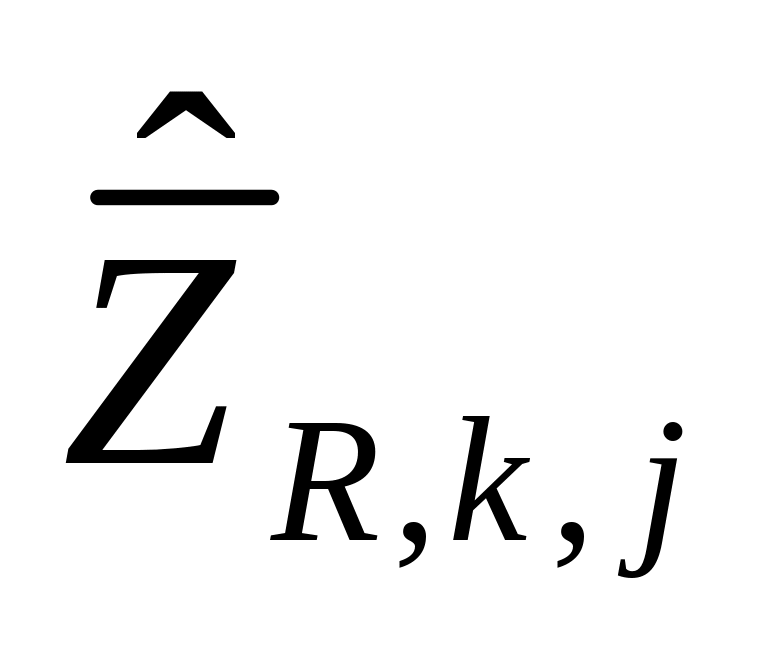 is
the respondent sample mean on expenditure category j for random
group k;
is
the respondent sample mean on expenditure category j for random
group k;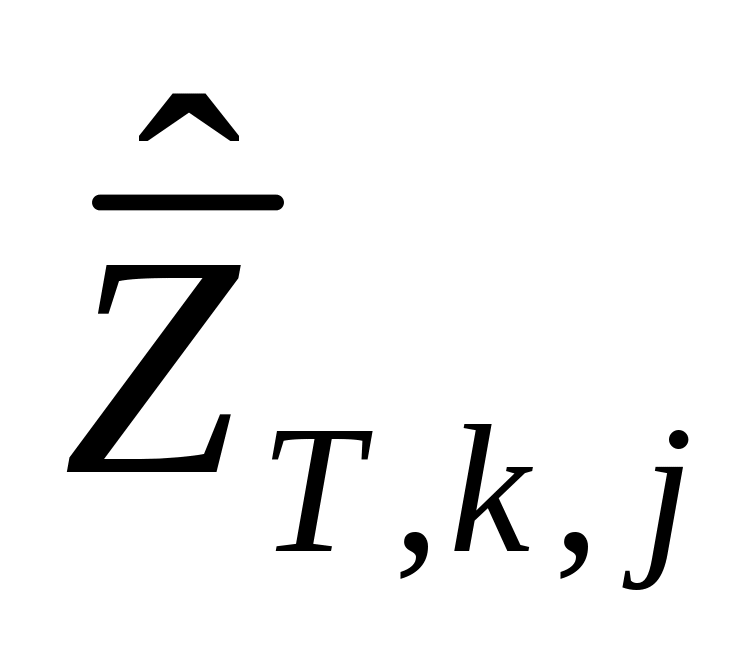 is
the total sample mean on expenditure category j for random group k;
is
the total sample mean on expenditure category j for random group k; is
the relative bias on expenditure category j for random group k; and
is
the relative bias on expenditure category j for random group k; and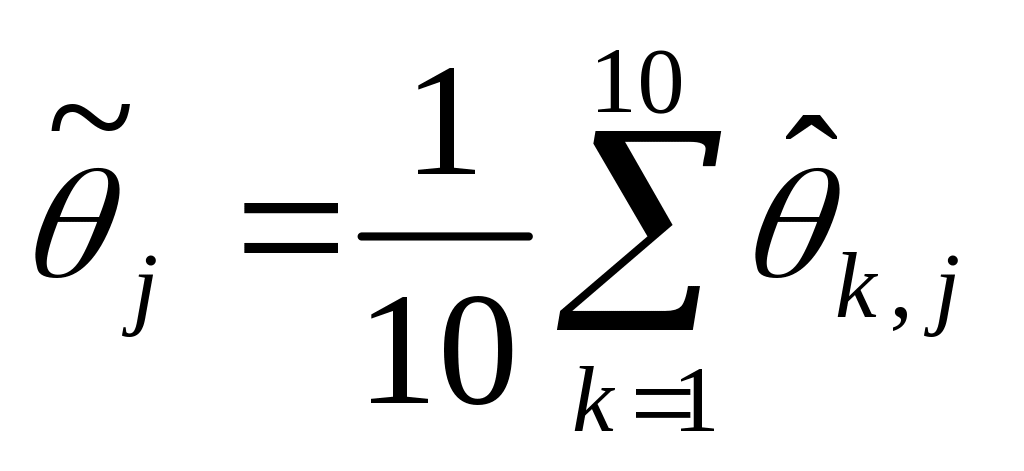 is
the average of the relative bias on expenditure category j over all
10 random groups.
is
the average of the relative bias on expenditure category j over all
10 random groups.
e. Significance tests
Expenditures
A 95% confidence interval of the relative nonresponse bias of expenditures was computed as follows:
![]()
where:
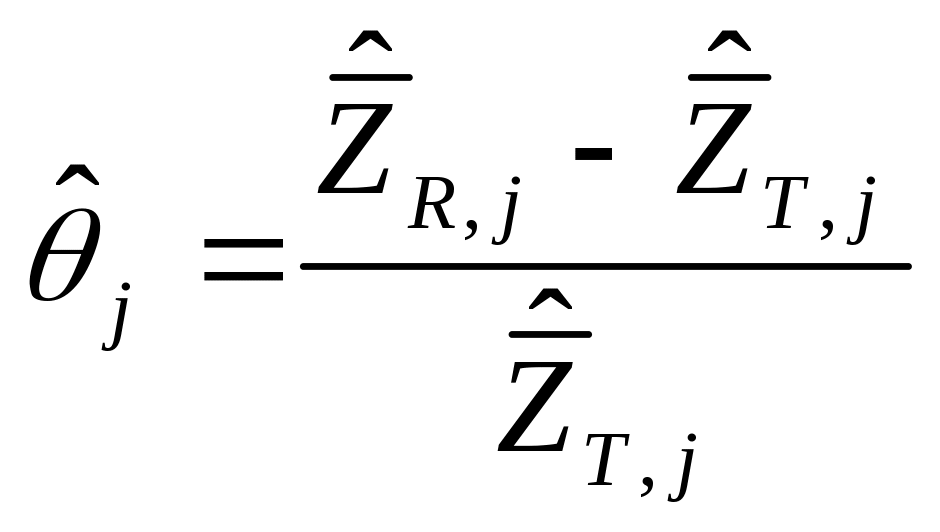 is
the full sample estimate of the relative nonresponse bias on
expenditure category j;
is
the full sample estimate of the relative nonresponse bias on
expenditure category j;
![]() is
the 97.5th
percentile of a t-distribution with 9 degrees of freedom; and
is
the 97.5th
percentile of a t-distribution with 9 degrees of freedom; and
![]() is
the random groups variance estimator described above.
is
the random groups variance estimator described above.
Categorical data
We compared respondents and proxy nonrespondents on categorical socio-demographic characteristics. For these comparisons, the test statistic was the adjusted Rao-Scott chi-square, which is a modified version of the Pearson chi-square that accounts for the complex sample design (SAS Institute Inc., 2004). The null hypothesis for the two-way comparisons in our analyses is that there is no association between response status and subgroup. For one-way comparisons, the null hypothesis is that the respondent distribution for a characteristic from the Interview Survey is statistically equivalent to the corresponding distribution for the population obtained from the ACS.
III. Individual studies
a. Comparison of response rates across subgroups7
This study examined the response rates among socio-demographic subgroups that could be identified for both respondents and nonrespondents. The goal was to determine whether the survey’s respondents and nonrespondents had the same socio-demographic characteristics. The subgroups analyzed were: region of the country (Northeast, Midwest, South, West), ‘urbanicity’ (urban, rural), type of PSU, housing tenure (owner or renter), and housing values for owners and renters.8
Base-weighted response rates were calculated for these subgroups separately for waves 1, 2, and 5 of the survey. They answer the question “What percent of the survey’s target population do the respondents represent?” Base-weighted response rates are defined as the sum of base-weighted interviewed units divided by the sum of base-weighted interviewed units plus the units with Type A noninterviews. Type A noninterviews occur when no interview is completed at an occupied eligible housing unit.9
Base-weighted
response rate =
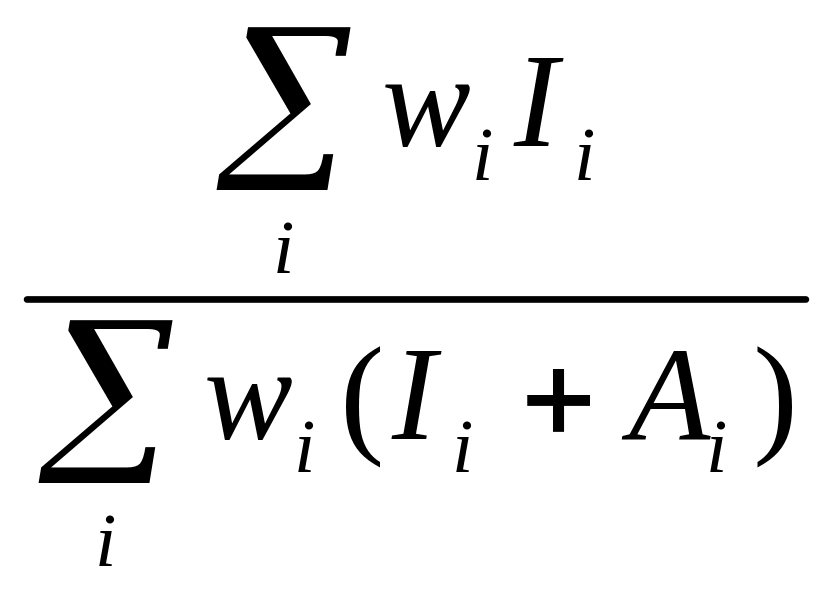
where:
wi = base weight for the ith consumer unit (CU);
Ii = 1 if the ith CU is a completed interview, and 0 otherwise; and
Ai = 1 if the ith CU is a Type A noninterview, and 0 otherwise.
Ideally, for this type of analysis, there should be no missing values for the subgroups of interest. Missing values may distort the response rates within a subgroup, especially if the cases with missing values differ from the complete cases. Therefore, this analysis was restricted to subgroups with no missing values for all the eligible cases.
Table 2 shows the weighted response rates for the various subgroups mentioned above in waves 1, 2, and 5. The results show that response rates differ within all of the subgroups examined. In particular, statistically significant differences (p<0.05) were found in the following pairwise comparisons within the subgroups:
across the regions, CUs in the Northeast and West have lower response rates than those in the Midwest and South;
across the types of PSU, CUs in metropolitan Core Based Statistical Areas (CBSAs) with a population of more than 2 million people have lower response rates than those in other types of PSUs;
renters in the third and fourth quartiles have lower response rates than renters in the lower quartiles in the Unit and Area frames, with a similar trend among homeowners; and
CUs in urban areas have lower response rates than those in rural areas.
In general, response rate differences within the subgroups suggest that the data are not MCAR because the respondent and nonrespondent CUs are not simple cross sections of the original sample.
Although there is evidence of an association between housing tenure and survey participation, there were no statistically significant differences between the pairwise comparisons of owners and renters in waves 2 and 5 (respondents who do not own or rent their homes had significantly higher response rates, though the number of these ‘other’ respondents is very small and the difference is not thought to be substantively meaningful). These findings generally held across waves 1, 2, and 5.
Table 2. Subgroup response rates `by wave, Interview Survey
|
Wave 1 |
Wave 2 |
Wave 5 |
|||
Subgroup |
n |
Response Rate % |
n |
Response Rate % |
n |
Response Rate % |
Overall |
12,451 |
78.9 |
12,372 |
76.4 |
12,505 |
76.5 |
Region1,2,5 |
|
|
|
|
|
|
Northeast |
2,468 |
75.1 |
2,468 |
74.8 |
2,332 |
73.8 |
Midwest |
2,871 |
81.2 |
2,841 |
78.6 |
2,875 |
78.0 |
South |
4,116 |
80.3 |
4,086 |
77.1 |
4,038 |
79.4 |
West |
2,996 |
77.4 |
2,977 |
74.5 |
3,260 |
72.8 |
Type of PSU1,2,5 |
|
|
|
|
|
|
A Metropolitan CBSAs > 2 million people |
6,197 |
75.7 |
6,127 |
73.5 |
6,462 |
73.4 |
X Metropolitan CBSAs < 2 million |
4,326 |
81.2 |
4,355 |
78.9 |
4,135 |
79.6 |
Y Micropolitan CBSAs |
1,308 |
83.1 |
1,286 |
79.6 |
1,304 |
79.6 |
Z Non-CBSA (‘rural’) areas |
620 |
80.9 |
604 |
78.0 |
604 |
77.0 |
Unit and Area Frames Housing value - Renters1,2,5 |
|
|
|
|
|
|
Quartile 1-2 |
1,947 |
80.4 |
1,901 |
79.2 |
1,241 |
78.4 |
Quartile 3-4 |
1,891 |
76.0 |
1,910 |
75.0 |
1,171 |
74.6 |
Housing value - Homeowners2,5 |
|
|
|
|
|
|
Quartile 1-2 |
4,228 |
79.8 |
4,239 |
77.2 |
2,869 |
78.3 |
Quartile 3-4 |
3,399 |
78.7 |
3,406 |
75.2 |
2,191 |
75.1 |
Urbanicity1,2,5 |
|
|
|
|
|
|
Urban |
10,217 |
78.2 |
10,159 |
75.9 |
10,054 |
75.7 |
Rural |
2,234 |
81.4 |
2,213 |
78.6 |
2,451 |
79.4 |
Housing tenure*2,5 |
|
|
|
|
|
|
Owner |
6,446 |
-- |
8,395 |
75.8 |
8,515 |
76.2 |
Renter |
3,071 |
-- |
3,872 |
77.3 |
3,908 |
77.0 |
Other |
93 |
-- |
105 |
92.6 |
82 |
88.4 |
1, 2, 5: Indicates a statistically significant difference (p<0.05) was found for the computed Rao-Scott adjusted chi-square statistic for the test of no association between survey participation and subgroup in waves 1, 2, and 5, respectively.
*: Wave 1 response rates for housing tenure are not displayed due to missing values.
b. Comparison of the Interview Survey respondents to external data10
Another common approach to analyzing nonresponse is to compare the distribution of socio-demographic characteristics of respondents to that of a recent census or other ‘gold standard’ survey (Groves, 2006). A ‘gold standard’ survey is one whose estimates are believed to be very accurate. Any significant differences between the Interview Survey and the census or ‘gold standard’ survey suggest that respondents in the Interview Survey are not representative of the target population, and thus the missing data in the Interview Survey are probably not MCAR.
The ‘gold standard’ survey chosen for this study was the 2005 American Community Survey (ACS). The ACS satisfied three important criteria: its estimates are considered to be very accurate; it has key socio-demographic variables available; and it was conducted in a time period very close to that which was used to analyze the Interview Survey. The ACS is a mandatory survey with a response rate of 97.3% and a coverage rate of 95.1% (Census Bureau, 2006).11 The ACS data used in this study were obtained from published tables on the Census website.
The Interview Survey data were weighted three ways for comparisons with the ACS: with base weights, noninterview adjustment weights, and final calibration weights. Comparisons were made for all three stages of weighting. Since all of the Interview Survey’s weights are CU-level weights and all of the ACS’s weights are person-level weights, we made the results of the two surveys comparable by deriving frequency distributions for person-level characteristics in the Interview Survey from CU-level weights.
Table 3 presents a comparison of the distribution of selected respondent socio-demographic characteristics between the Interview Survey and the ACS. The variables compared were: gender, age, race, educational attainment, household size, tenure, the number of rooms in the dwelling unit, housing value, rent, and CU income. Statistically significant differences (p<0.00112) were found between the two distributions for all comparisons and all types of weighting with only two exceptions, calibration-weighted age and housing.
There are several factors beyond the characteristics of the respondents that make differences likely to be statistically significant. For example, the extremely large sample size of the Interview Survey makes statistical significance likely even if all the differences are not substantively meaningful. In addition, the Interview Survey and the ACS collect data differently, the two surveys use different data collection modes, and the wording of the questions are different. As a result, the strength of the comparison to the ACS is limited by the extent to which the survey designs are truly comparable.
The majority of the percentages shown in Table 3 had differences smaller than six percentage points, meaning that the Interview Survey and ACS distributions are very similar on these variables. However, larger differences were found for race and rent: there were higher percentages of whites and higher percentages of monthly rents under $500 among Interview Survey respondents than among ACS respondents, which indicates that the Interview data are probably not MCAR.
In short, the first study found that the data are not MCAR, and this study provided further evidence to substantiate that conclusion.
Table 3. A comparison of selected characteristics of respondents in the Interview Survey and the American Community Survey
|
ACS |
Base-Weighted |
Noninterview-Weighted |
Calibration-Weighted |
|
|
ACS |
Base-Weighted |
Noninterview-Weighted |
Calibration-Weighted |
Gender (%) 1,2,3 |
|
|
|
|
|
Number of rooms in dwelling unit (%)1,2,3 |
|
|
|
|
Male |
49.0 |
48.2 |
48.2 |
48.2 |
|
1 |
1.0 |
1.0 |
1.0 |
1.1 |
Female |
51.0 |
51.8 |
51.8 |
51.8 |
|
2 |
3.2 |
2.0 |
2.0 |
2.1 |
Age (%)1,2 |
|
|
|
|
|
3-4 |
26.9 |
22.8 |
23.0 |
23.6 |
Under age 25 |
34.5 |
35.4 |
34.4 |
34.8 |
|
5-6 |
40.8 |
39.5 |
39.4 |
39.5 |
25-34 |
13.5 |
12.4 |
12.2 |
13.4 |
|
7-8 |
20.2 |
24.0 |
23.9 |
23.5 |
35-44 |
15.0 |
14.7 |
14.6 |
14.7 |
|
9+ |
8.0 |
10.7 |
10.6 |
10.3 |
45-54 |
14.6 |
14.3 |
14.5 |
14.5 |
|
Owner occupied housing value (%)1,2,3 |
|
|
|
|
55-64 |
10.5 |
10.7 |
11.1 |
10.5 |
|
<$50,000 |
9.1 |
7.5 |
7.4 |
7.6 |
65-74 |
6.4 |
6.7 |
7.1 |
6.3 |
|
$50,000 to $99,999 |
18.1 |
16.2 |
16.3 |
16.5 |
75 and over |
5.7 |
5.8 |
6.1 |
5.7 |
|
$100,000 to $149,999 |
17.4 |
16.6 |
16.7 |
16.8 |
Race (%)1,2,3 |
|
|
|
|
|
$150,000 to $199,999 |
13.7 |
14.2 |
14.4 |
14.4 |
White |
74.8 |
82.3 |
83.3 |
81.4 |
|
$200,000 to $299,999 |
15.1 |
17.2 |
17.0 |
17.0 |
Black |
12.5 |
11.4 |
10.4 |
12.5 |
|
$300,000 to $499,999 |
15.4 |
16.6 |
16.6 |
16.5 |
Other |
12.7 |
6.3 |
6.3 |
6.1 |
|
$500,000 to $999,999 |
9.3 |
9.6 |
9.5 |
9.3 |
Education attainment* (%) 1,2,3 |
|
|
|
|
|
$1,000,000+ |
2.0 |
2.1 |
2.1 |
2.0 |
Less than high school |
15.8 |
16.3 |
16.1 |
16.0 |
|
Monthly rent (%)1,2,3 |
|
|
|
|
High school graduate |
29.6 |
28.1 |
28.0 |
28.0 |
|
Less than $500 |
20.5 |
38.7 |
38.5 |
38.4 |
Some college/Assoc degree |
27.5 |
28.1 |
28.1 |
28.3 |
|
500- <750 |
29.1 |
29.4 |
29.4 |
29.6 |
College graduate |
27.2 |
27.4 |
27.7 |
27.7 |
|
750- <1,000 |
22.0 |
16.1 |
16.4 |
16.4 |
Household size (%)1,2,3 |
|
|
|
|
|
1,000- <1,500 |
16.1 |
9.8 |
9.9 |
9.8 |
1 person |
27.1 |
28.2 |
29.3 |
29.4 |
|
1,500+ |
6.3 |
4.2 |
4.3 |
4.2 |
2 persons |
33.3 |
31.9 |
32.6 |
31.9 |
|
CU income (%)1,2,3 |
|
|
|
|
3 persons |
16.0 |
15.9 |
15.2 |
15.6 |
|
<$10,000 |
8.7 |
10.3 |
10.2 |
10.4 |
4+ persons |
23.6 |
24.1 |
22.9 |
23.1 |
|
$10,000 to $14,999 |
6.2 |
7.6 |
7.6 |
7.6 |
Housing tenure (%)1,2 |
|
|
|
|
|
$15,000 to $24,999 |
12.0 |
12.6 |
12.6 |
12.6 |
Owner |
66.9 |
68.0 |
68.8 |
67.4 |
|
$25,000 to $34,999 |
11.5 |
14.3 |
14.3 |
14.3 |
Renter |
33.1 |
32.0 |
31.2 |
32.6 |
|
$35,000 to $49,999 |
15.1 |
15.1 |
15.2 |
15.2 |
|
|
|
|
|
|
$50,000 to $74,999 |
18.9 |
16.4 |
16.4 |
16.5 |
|
|
|
|
|
|
$75,000+ |
27.7 |
23.7 |
23.7 |
23.4 |
1, 2, 3: Indicates a statistically significant difference (p<.05) was found for the computed Rao-Scott adjusted chi-square statistic for the test of no difference in distributions between the ACS and the Interview survey base-weighted, noninterview-weighted, and calibration-weighted, respectively
*: respondent age ≥ 25
c. ‘Harder-to-contact’ respondents as proxies for nonrespondents13
The third study uses ‘harder-to-contact’ respondents as proxy nonrespondents. It draws on a theory known as the ‘continuum of resistance’ to identify appropriate respondents to serve as proxy nonrespondents. This theory suggests that sample units can be ordered across a continuum by the amount of interviewer effort exerted in order to obtain a completed interview (Groves, 2006).
In past research, ‘harder-to-contact’ respondents were classified along the ‘continuum of resistance’ using the total number of contact attempts, the length of time the sample unit was in the field, and the last five percent of completed interviews14 (Bates & Creighton, 2000; Traugott, 1987; Lin & Schaeffer, 1995; Ellis, Endo & Armer, 1970). The weakness with these indicators is in attributing the contact difficulty to the correct party, the interviewer or the respondent. For instance, the interviewer’s schedule or personal preferences for when to work on a case may affect the length of time the sample unit is in the field. Also, the total number of attempts may include scheduling appointments and other preliminary activities prior to actually attempting an interview.
Using data collected in the CE Contact History Instrument (CHI), we defined respondents to be ‘harder-to-contact’ when over 45 percent of the contact attempts resulted in noncontacts. This cut-off was selected to yield a response rate slightly under 80 percent, which is similar to the Interview Survey’s actual response rate during the time period covered by the data. Also, this measure controls for some of the weaknesses cited above because it standardizes the amount of effort exerted by an interviewer to make contact across all sample units.
As an example, consider the contact history of a CU that had 6 contact attempts:
Contact attempt |
Classification |
1. No one home |
Noncontact |
2. No one home |
Noncontact |
3. Got answering machine/service |
Noncontact |
4. No one home |
Noncontact |
5. Respondent too busy, appointment set |
Contact |
6. Complete case – ready to transmit |
Contact |
In this example, 6 contact attempts were made, resulting in 2 contacts and 4 noncontacts, for a 67% noncontact rate. Since the noncontact rate is greater than 45%, this particular CU was classified as ‘harder-to-contact.’
In this study respondents and proxy nonrespondents were compared at each wave of the survey on the following socio-demographic characteristics: gender, marital status, race/ethnicity, age, educational attainment, household tenure, Census Region (Northeast, Midwest, South and West), urbanicity (urban or rural) and CU size. Table 4 shows these comparisons, with the percent of respondents compared to the percent of proxy nonrespondents in each demographic group. For example, in wave 1 people who were 25-34 years old made up 15.1% of the respondents and 19.9% of the proxy nonrespondents. Differences such as this suggest that the data may not be MCAR with respect to some socio-demographic characteristics (respondent age, race, educational attainment, marital status, CU size, household tenure, and census region).
Table 4. Demographic characteristics of respondents and proxy nonrespondents (‘harder-to-contact’) in the Interview Survey by wave
Demographic Characteristic |
Wave 1 |
Wave 2 |
Wave 5 |
|||
Respondents |
Proxies |
Respondents |
Proxies |
Respondents |
Proxies |
|
Gender (%) |
|
|
|
|
|
|
Male |
41.7 |
41.5 |
40.0 |
42.0 |
38.8 |
38.8 |
Female |
58.3 |
58.5 |
60.0 |
58.0 |
61.2 |
61.2 |
Age (%)1, 2, 5 |
|
|
|
|
|
|
Under age 25 |
9.8 |
8.6 |
7.1 |
7.6 |
7.3 |
7.2 |
25-34 |
15.1 |
19.9 |
15.4 |
19.8 |
14.2 |
18.3 |
35-44 |
19.3 |
21.7 |
20.2 |
23.1 |
20.0 |
22.4 |
45-54 |
19.4 |
21.1 |
19.7 |
20.5 |
20.3 |
21.6 |
55-64 |
15.9 |
15.1 |
16.0 |
15.8 |
16.4 |
14.8 |
65-74 |
10.5 |
7.2 |
11.1 |
7.5 |
11.3 |
8.4 |
75 and over |
10.0 |
6.3 |
10.5 |
5.7 |
10.4 |
7.3 |
Race (%)1 |
|
|
|
|
|
|
White |
83.4 |
82.6 |
83.4 |
83.3 |
82.6 |
82.7 |
Black |
11.1 |
12.6 |
11.2 |
11.5 |
11.4 |
12.3 |
Other |
5.5 |
4.8 |
5.4 |
5.2 |
6.0 |
5.0 |
Educational Attainment (%)1, 2 |
|
|
|
|
|
|
Less than high school |
15.1 |
14.1 |
15.5 |
13.1 |
15.3 |
13.9 |
High school graduate |
25.7 |
23.9 |
26.1 |
25.1 |
26.1 |
27.2 |
Some college or Associate’s degree |
32.1 |
32.0 |
31.2 |
33.4 |
32.0 |
30.2 |
College graduate |
27.2 |
30.1 |
27.2 |
28.3 |
26.6 |
28.7 |
Marital Status (%)1, 2, 5 |
|
|
|
|
|
|
Not Married |
45.1 |
52.0 |
45.6 |
50.5 |
45.4 |
49.4 |
Married |
54.9 |
48.0 |
54.4 |
49.5 |
54.6 |
50.6 |
CU Size (%)1, 2, 5 |
|
|
|
|
|
|
1 |
27.5 |
31.9 |
27.8 |
29.9 |
27.7 |
29.8 |
2 |
32.3 |
30.6 |
31.9 |
31.3 |
32.2 |
31.2 |
3 |
15.7 |
16.4 |
15.1 |
17.0 |
15.3 |
18.3 |
4+ |
24.5 |
21.1 |
25.1 |
21.8 |
24.8 |
20.6 |
Household Tenure (%)2 |
|
|
|
|
|
|
Owner |
68.4 |
66.3 |
68.8 |
64.9 |
68.4 |
67.9 |
Renter |
31.6 |
33.7 |
31.2 |
35.1 |
31.6 |
32.1 |
CU Income (%) (imputed) |
|
|
|
|
|
|
<$10,000 |
- |
- |
9.7 |
8.6 |
8.5 |
8.2 |
$10,000 to $14,999 |
- |
- |
6.8 |
5.8 |
7.8 |
6.1 |
$15,000 to $24,999 |
- |
- |
13.3 |
11.3 |
12.4 |
12.0 |
$25,000 to $34,999 |
- |
- |
12.5 |
13.1 |
12.0 |
14.6 |
$35,000 to $49,999 |
- |
- |
13.7 |
14.1 |
15.5 |
15.9 |
$50,000 to $74,999 |
- |
- |
16.9 |
19.2 |
17.4 |
17.6 |
$75,000+ |
- |
- |
27.1 |
27.9 |
26.3 |
25.6 |
Census Region (%)1, 2, 5 |
|
|
|
|
|
|
Northeast |
18.6 |
17.1 |
18.4 |
20.3 |
18.5 |
17.9 |
Midwest |
24.6 |
24.9 |
24.5 |
24.9 |
23.7 |
25.2 |
South |
34.1 |
39.4 |
34.9 |
36.4 |
36.0 |
39.5 |
West |
22.7 |
18.6 |
22.2 |
18.4 |
21.8 |
17.4 |
Urbanicity (%) |
|
|
|
|
|
|
Rural |
20.9 |
21.2 |
20.9 |
20.8 |
23.2 |
24.3 |
Urban |
79.1 |
78.8 |
79.1 |
79.2 |
76.8 |
75.7 |
1, 2, 5: Indicates a statistically significant difference (p<0.05) between the respondents and nonrespondents for the demographic characteristic at the particular interview (1, 2, or 5)
In addition to answering the MCAR question, this study also estimated the relative nonresponse bias for total expenditures and for 13 expenditure subcategories: alcoholic beverages, apparel and services, cash contributions, education, entertainment, food, health care, housing, personal care, personal insurance and pensions, reading, tobacco and smoking supplies, and transportation.15 Table 5 shows the relative nonresponse bias estimates along with their 95% confidence intervals for waves 2 and 5.
When ‘harder-to-contact’ respondents were used as proxy nonrespondents, no evidence of nonresponse bias was found for total expenditures. The relative nonresponse bias was ‑0.14%, but the 95% confidence interval included the number zero (-0.14 1.26), meaning that nonresponse bias was unlikely. This was also true for most of the subcategories. However, two expenditure subcategories showed some evidence of bias. In wave 2, reading materials had a relative nonresponse bias estimate of 3.82% (3.82 ± 3.31), and health care had a relative bias estimate of 3.68% (3.68 ± 1.88). The 95% confidence intervals for these subcategories did not contain the number zero, providing some evidence that nonresponse bias may exist. For all other expenditure categories, the relative nonresponse bias was not statistically significant. The same two categories showed evidence of nonresponse bias in wave 5: reading materials showed a relative nonresponse bias estimate of 3.41% (3.41 ± 3.13) and for health care expenditures it was 3.21% (3.21 ± 2.33). It is worth noting that these two categories represent only 0.3% and 6% of total spending, so the impact of any bias in them is probably very small.
Table 5: Estimates of relative bias in the Interview Survey for expenditure categories using harder to contact respondents as proxy nonrespondents
Expenditure Category |
Share of total expenditures (%)* |
Harder-to-contact respondents as proxy nonrespondents |
|||||
Wave 2 |
Wave 5 |
||||||
Relative Bias % |
Lower 95% CI |
Upper 95% CI |
Relative Bias % |
Lower 95% CI |
Upper 95% CI |
||
Total Expenditures |
|
-0.14 |
-1.40 |
1.12 |
-0.10 |
-1.18 |
0.98 |
|
|
|
|
|
|
|
|
Alcoholic Beverages |
0.81 |
-0.96 |
-3.74 |
1.82 |
-2.82 |
-6.18 |
0.54 |
Apparel and Services |
2.88 |
0.96 |
-3.48 |
5.40 |
0.37 |
-1.85 |
2.59 |
Cash Contributions |
3.90 |
2.09 |
-2.60 |
6.78 |
0.73 |
-2.02 |
3.48 |
Education |
1.90 |
-3.74 |
-10.83 |
3.35 |
1.86 |
-6.08 |
9.80 |
Entertainment |
5.10 |
0.49 |
-2.49 |
3.47 |
0.40 |
-2.43 |
3.23 |
Food |
13.40 |
0.19 |
-0.83 |
1.21 |
0.76 |
-0.06 |
1.58 |
Health |
6.00 |
3.68 |
1.80 |
5.56 |
3.21 |
0.88 |
5.54 |
Housing |
33.13 |
-0.28 |
-1.40 |
0.84 |
-0.89 |
-1.94 |
0.16 |
Personal Care |
0.63 |
0.32 |
-2.24 |
2.88 |
0.59 |
-0.91 |
2.09 |
Personal Insurance |
10.32 |
-0.51 |
-2.72 |
1.70 |
-0.68 |
-2.36 |
1.00 |
Reading Materials |
0.29 |
3.82 |
0.51 |
7.13 |
3.41 |
0.28 |
6.54 |
Tobacco |
0.72 |
-0.27 |
-4.07 |
3.53 |
-1.51 |
-3.43 |
0.41 |
Transportation |
19.12 |
-1.96 |
-5.04 |
1.12 |
-0.53 |
-3.59 |
2.53 |
* Note that this column does not sum to 100% since some expenditure items are not categorized in one of the categories listed.
d. Pattern of Participation while in Sample16
The fourth study is based on the premise that we can learn about nonrespondents by looking at panel survey respondents who failed to complete the entire series of interviews (Reyes-Morales, 2003, 2007). In this study, attritors and intermittent respondents were classified as proxy nonrespondents, and then these proxy nonrespondents were compared to complete respondents on socio-demographic variables and expenditures.
The study was based on a single cohort of data, CUs that had their first interview in April-June 2005, their second interview in July-September 2005, and their last (5th) interview in April-June 2006. The cohort had 3,071 unique CUs out of which 2,468 were used in the study. 17 Using the common data file described earlier, demographic characteristics were imputed for the nonrespondents with a technique similar to the ‘last observation carried forward’ (Verbeke & Molenberghs, 2000). In this technique, any missing values for a particular CU were imputed by copying the values that were recorded for that CU in a previous interview. The technique assumes that the demographic characteristics do not change from one wave to the next.
The set of 2,468 usable CUs was divided into three groups according to their pattern of participation in waves 2 through 5 while they were in the sample: 18
Complete respondents: These are CUs that participated in the survey in all contiguous waves of the survey period.
Attritors: These are CUs that participated in the first wave for which they were eligible, and possibly completed the second and third waves (if eligible) but then refused to participate in all subsequent waves for which they were eligible. For example, if the pattern of participation was (1, 2, 2, 3) or (1, 1, 2, 2), then that CU would be classified as an attritor.19
Intermittent respondents: These are CUs that participated in at least one wave among all the waves for which they were eligible. For example, if the pattern of participation was (3, 2, 1, 2), then that CU would be classified as an intermittent respondent.
The set of complete respondents had 1,941 CUs (78.6%), the set of intermittent respondents had 347 CUs (14.1%), and the set of attritors had 180 CUs (7.3%).
After accounting for the Interview Survey’s complex sampling design, the three response groups were compared using the Rao-Scott chi-square and Wald statistics on various socio-demographic variables, including household tenure (owner or renter), marital status, gender, respondent age, race, Hispanic origin, CU size, educational attainment, region, and urbanicity. Statistically significant differences were found between intermittent respondents and complete respondents with respect to age and Hispanic origin; while attritors were found to differ from complete respondents only with respect to age (Table 6).
For the nonresponse bias analysis, we averaged each expenditure category across waves 2 through 5, and calculated relative nonresponse bias for total expenditures and the thirteen expenditure subcategories. We then calculated relative nonresponse bias using each CU’s expenditures averaged across waves 2 through 5. Attritors and intermittent respondents were combined to form a single proxy nonrespondent group in the relative nonresponse bias calculations. Table 7 shows the relative biases for expenditures for this combined proxy nonrespondent group.
When attritors and intermittent respondents were used as proxy nonrespondents, the relative nonresponse bias for total expenditures was not statistically significant since its 95% confidence interval included the number zero. However, three expenditure subcategories showed some evidence of nonresponse bias: Entertainment, 3.46% (3.46 ± 3.06), Personal Insurance and Pensions, 3.82% (3.82 ± 2.22), and Transportation, ‑5.65% (-5.65 ± 4.75). These categories represent 5%, 10%, and 19%, respectively, of total expenditures. The confidence intervals for these subcategories do not include zero, which suggests that their biases may be real. However, these three subcategories are different than the ones identified in the ‘harder-to-contact’ study.
Table 6. Demographic characteristics of respondents and proxy nonrespondents (attritors and intermittent respondents) in the Interview Survey
|
|
Proxy nonrespondents |
|
|
|
Proxy nonrespondents |
||
Demographic Characteristic |
Respondents (n=1,941) |
Intermittent (n=347) |
Attritors (n=180) |
|
Demographic Characteristic |
Respondents (n=1,941) |
Intermittent (n=347) |
Attritors (n=180) |
Gender (%) |
|
|
|
|
CU Size (%) |
|
|
|
Male |
41.1 |
46.1 |
38.9 |
|
1 person |
30.6 |
25.6 |
35.0 |
Female |
58.9 |
53.9 |
61.1 |
|
2 persons |
31.1 |
30.3 |
29.4 |
Age (%)I,A |
|
|
|
|
3 persons |
15.1 |
15.0 |
16.1 |
Under age 25 |
7.8 |
6.2 |
9.5 |
|
4+ persons |
23.2 |
29.1 |
19.4 |
25-34 |
16.8 |
17.2 |
22.9 |
|
Household Tenure (%) |
|
|
|
35-44 |
20.8 |
25.1 |
24.0 |
|
Owned |
62.7 |
64.3 |
56.1 |
45-54 |
19.9 |
21.9 |
21.8 |
|
Rented |
35.4 |
34.9 |
41.7 |
55-64 |
15.4 |
17.5 |
9.5 |
|
Other |
1.9 |
0.9 |
2.2 |
65-74 |
10.6 |
6.5 |
7.3 |
|
CU Income(%) (imputed) |
|
|
|
75 and over |
8.6 |
5.6 |
5.0 |
|
<$10,000 |
9.6 |
8.4 |
11.7 |
Race (%) |
|
|
|
|
$10,000 to $14,999 |
7.4 |
7.2 |
4.4 |
White |
81.6 |
78.7 |
80.6 |
|
$15,000 to $24,999 |
12.9 |
10.4 |
16.1 |
Black |
11.8 |
14.7 |
13.3 |
|
$25,000 to $34,999 |
12.3 |
13.6 |
10.6 |
Other |
6.6 |
6.6 |
6.1 |
|
$35,000 to $49,999 |
15.4 |
14.2 |
22.2 |
Hispanic Origin (%)I |
|
|
|
|
$50,000 to $74,999 |
17.6 |
18.2 |
15.0 |
Hispanic |
11.3 |
17.3 |
10.6 |
|
$75,000+ |
24.8 |
28.0 |
20.0 |
Non-Hispanic |
88.7 |
82.7 |
89.4 |
|
Census region |
|
|
|
Educational Attainment (%) |
|
|
|
|
Northeast |
18.6 |
16.4 |
22.8 |
Less than high school |
15.3 |
16.0 |
15.2 |
|
Midwest |
23.7 |
21.3 |
21.7 |
High School graduate |
26.2 |
25.6 |
24.7 |
|
South |
34.0 |
38.9 |
29.4 |
Some college or Associate’s degree |
32.8 |
31.4 |
38.2 |
|
West |
23.7 |
23.3 |
26.1 |
Bachelor’s or higher |
25.7 |
27.0 |
21.9 |
|
Urbanicity (%) |
|
|
|
Marital Status (%) |
|
|
|
|
Urban |
82.5 |
84.4 |
86.1 |
Married |
51.1 |
54.5 |
45.0 |
|
Rural |
17.5 |
15.6 |
13.9 |
Not married |
48.9 |
45.5 |
55.0 |
|
|
|
|
|
‘I’ indicates a statistically significant difference (p<0.05) between complete respondents and intermittent respondents, and ‘A’ between complete respondents & attritors.
Table 7: Estimates of relative bias in the Interview Survey for expenditure categories using Intermittent respondents and attritors as proxies for nonrespondents
-
Expenditure Category
Share of total expenditures (%)*
Intermittent respondents and attritors as proxy nonrespondents
Across waves
Relative Bias %
Lower 95% CI
Upper 95% CI
Total Expenditures
-0.54
-2.31
1.24
Alcoholic Beverages
0.81
-2.37
-9.09
4.36
Apparel and Services
2.88
-0.01
-5.24
5.21
Cash Contributions
3.90
4.24
-0.98
9.46
Education
1.90
-2.27
-11.81
7.28
Entertainment
5.10
3.46
0.35
6.57
Food
13.40
0.09
-1.35
1.53
Health
6.00
1.03
-2.76
4.82
Housing
33.13
-0.56
-2.26
1.14
Personal Care
0.63
1.95
-0.74
4.65
Personal Insurance
10.32
3.82
1.72
5.93
Reading Materials
0.29
4.22
-1.16
9.60
Tobacco
0.72
2.51
-1.79
6.81
Transportation
19.12
-5.65
-9.11
-2.19
* Note that this column does not sum to 100% since some expenditure items are not categorized in one of the categories listed.
IV. Findings across studies
a. MCAR
Using socio-demographic data from respondents and nonrespondents, all four studies conclude that either the respondents are significantly different from the complete sample or that they are significantly different from the nonrespondents. In either case, these findings suggest that the data are not MCAR. (See Tables 2, 3, 4, and 6.)
b. Characteristics of nonrespondents
All four studies provide insights into the characteristics of nonrespondents in the Interview Survey. Table 8 synthesizes the results from the four studies. In Table 8 a characteristic is shown as being under-represented (or over-represented) if that characteristic was under-represented (or over-represented) in at least three of the four studies. For example, race was analyzed in three studies (the comparison to external data, and the two proxy nonrespondent studies), and all three of them found blacks to be under-represented (see Tables 3, 4, and 6). Therefore, we conclude that blacks are more likely than other races to be nonrespondents in the Interview Survey. Likewise, age was analyzed in three studies, and all three of them found people in the oldest age group to be over-represented, so we conclude that people over 55 years old are more likely than people in younger age groups to be respondents in the Interview Survey.
c. Estimates of relative nonresponse bias for expenditure categories
Of the four studies, only the two proxy nonrespondent studies estimate nonresponse bias. Both proxy nonrespondent studies found no evidence of nonresponse bias in the total expenditures category, and no evidence of nonresponse bias in most of the thirteen expenditure subcategories examined. Although both studies found some evidence of nonresponse bias in a few of the expenditure subcategories, they did not find it in the same subcategories. Since the two studies defined ‘proxy’ nonrespondents differently, some variation in the results was expected, but taken together the results suggest that nonresponse bias is probably not a major issue in the Interview Survey (see Tables 5 and 7).
Table 8. Summary of characteristics of respondents across studies
|
Study |
|
||||
Characteristic |
Response Rate across subgroups |
Comparison to External Data |
‘Harder-to-contact’ as nonrespondents |
Attritors & intermittent respondents as nonrespondents |
Conclusion |
|
Gender |
— |
males under-represented |
inconclusive |
inconclusive |
inconclusive |
|
Age |
— |
55+ over-represented |
55+ over-represented |
65+ over-represented |
55+ over-represented |
|
Race |
— |
blacks under-represented |
blacks under-represented |
blacks under-represented |
blacks under-represented |
|
Educational attainment |
— |
HS graduate, some college & higher over-represented |
HS graduate or less over-represented |
HS graduate over-represented |
inconclusive |
|
Housing tenure |
renters over-represented |
renters under-represented |
renters under-represented |
inconclusive |
inconclusive |
|
Marital Status |
— |
— |
not married under-represented |
inconclusive |
inconclusive |
|
Census region |
Midwest over-represented |
— |
Midwest & South under-represented; West over-represented |
Midwest over-represented |
inconclusive |
|
Urbanicity |
urban under-represented |
— |
inconclusive |
urban under-represented |
inconclusive |
|
CU size |
— |
1 person CU over-represented |
2-person & 4+ person CUs over-represented |
2-person CUs over-represented |
inconclusive |
|
— indicates characteristic was not studied
In 2006, OMB issued a directive requiring any federal household survey with a response rate below 80 percent to perform a nonresponse analysis. The Interview Survey is one such survey that has a response rate below 80 percent. Each of the four studies in this report was designed to analyze nonresponse in the Interview Survey by answering one or more of the following questions: (1) Are the data in the Interview Survey MCAR? (2) What are the demographic characteristics of the nonrespondents? and (3) What is the level of nonresponse bias in the Interview Survey? All four studies shed light on the first two questions, while the two proxy nonrespondent studies addressed the third question.
All of the studies found that the data are not MCAR. The study comparing response rates by subgroup addressed the MCAR question by looking for differences in response propensities on variables that were available for both respondents and nonrespondents. Statistically significant differences were found by region of the country, urbanicity, and housing tenure. Likewise, the study comparing respondent demographic characteristics to the American Community Survey’s population found statistically significant differences for most of the variables examined. The study using ‘harder-to-contact’ respondents as proxy nonrespondents found statistically significant differences for age, marital status, CU size, and region of the country for all waves; and statistically significant differences for race, educational attainment, and household tenure for some waves. The study using intermittent respondents and attritors as proxy nonrespondents found statistically significant differences by age in both groups of proxy nonrespondents, and for Hispanic origin in the set of ‘intermittent’ proxy nonrespondents. Because statistically significant differences were found in each of these studies, we conclude that the data are not MCAR.
All four of these studies addressed the second question by providing insight into the characteristics of nonrespondents in the Interview Survey. Any characteristic for which a statistically significant difference was observed suggests that the respondent sample over-represents particular subgroups of the survey’s target population while under-representing other subgroups. Again, the individual study conclusions vary, but it is evident that blacks are under-represented among the respondents (nonrespondents tend to be disproportionately black) while those age 55 and over tend to be over-represented (respondents tend to be disproportionately older).
Two of the studies addressed the third question about the level of nonresponse bias in the survey’s estimates. The study that used ‘harder-to-contact’ respondents as proxy nonrespondents did not find any nonresponse bias in the total expenditures category, since its 95% confidence intervals included the number zero. In addition, the study did not find any nonresponse bias in eleven of the thirteen expenditure subcategories examined. Two subcategories, health expenditures and reading materials expenditures, exhibited statistically significant nonresponse bias estimates. However, these expenditures account for only 6.0% and 0.3%, respectively, of the total expenditures category, so their overall effect on the survey’s published estimates is small. The results from the ‘patterns of participation’ study were similar. That study did not find any nonresponse bias in the total expenditures category, and it did not find any nonresponse bias in ten of the thirteen expenditure subcategories examined. Only three expenditure subcategories exhibited statistically significant nonresponse bias estimates. They were entertainment, personal insurance, and transportation, which represent 5, 10, and 19 percent, respectively, of total expenditures. With the exception of transportation (and perhaps personal insurance), these three expenditures categories contribute only a small amount to total expenditures.
Individually, the proxy nonrespondent studies identified a few expenditure categories with non-zero levels of nonresponse bias, but they identified different categories. Furthermore, a majority of the potentially biased expenditure estimates only contribute a small amount to total expenditures. Since some bias could be expected to occur at random, and since the findings across the two proxy studies were not consistent, we conclude that the expenditure estimates derived from the Interview Survey are not subject to high levels of nonresponse bias.
No one study, taken alone, is meant to provide a definitive answer to the questions raised in this research. Each approach has its own strengths and weaknesses. But taken together, the four studies show that estimates from the Interview Survey do not have a significant amount of nonresponse bias, even though the respondents and nonrespondents have different characteristics and the data are not MCAR.
The results from these four studies provide a counterexample to the commonly held belief that if a survey’s missing data are not MCAR then its estimates are subject to nonresponse bias. From the nonresponse bias equation provided by OMB (2006), the nonresponse bias in a survey estimate will be zero if there is complete response or if the mean expenditure for respondents is equal to the mean expenditure for nonrespondents. The key for the Interview Survey seems to be the latter situation. When the data are not MCAR, as in our case, similar expenditure patterns for the respondents and nonrespondents could still be observed if the bias in an under-represented group (e.g., blacks) is counter-balanced by the same bias in an over-represented group (e.g., the over-55 age group). The absence of meaningful bias in the total expenditures category seems to support this argument. In conclusion, nonresponse bias does not appear to be a significant issue for the Consumer Expenditure Interview Survey.
VI. Literature Cited
Bates, N. & Creighton, K. (2000). The last five percent: What can we learn from difficult/late interviews? Proceedings of the Section on Government Statistics and Section on Social Statistics, American Statistical Association, 120-125.
Brick, J. M., & Bose, J. (2001). Analysis of potential nonresponse bias. Proceedings of the Annual Meetings of the American Statistical Association, August 5-9, 2001.
Census Bureau (2006). Using the data: Quality measures. Retrieved April 18, 2007 from Census Bureau Web Site www.census.gov/acs/www/acs-php/quality_measures_coverage_2005.php.
CE Nonresponse Bias Team (2007a). CEQ response rates by subgroup. Internal BLS Report.
CE Nonresponse Bias Team (2007b). Comparison of the characteristics of the CEQ respondents to external data. Internal BLS Report.
CE Nonresponse Bias Team (2007c). Nonresponse bias: Using harder-to-contact respondents as proxies for nonrespondents. Internal BLS Report.
CE Nonresponse Bias Team (2007d). Pattern of participation while in sample: intermittent respondents and attritors as proxy nonrespondents in the Interview Survey. Internal BLS Report.
Dixon, J. (2001). Relationship between household nonresponse, demographics and the unemployment rate in the Current Population Survey. In Proceedings of the Annual Meetings of the American Statistical Association, August 5-9, 2001.
Dixon, J. (2004). Using Census match data to evaluate models of survey nonresponse. In Proceedings of the Annual Meetings of the American Statistical Association, August 8-12, 2004.
Duncan, G.J., & Hill, D.H. (1989). Assessing the quality of household panel data: The case of the panel Study of Income Dynamics. Journal of Business & Economic Statistics, 7(4), p. 441-452.
Ellis, R.A., Endo, C.M. & Armer, J.M. (1970). The use of potential nonrespondents for studying nonresponse bias. The Pacific Sociological Review, 13(2), 103-109.
Groves, R. M. (2006). Nonresponse rates and nonresponse bias in household surveys. Public Opinion Quarterly, 70, 646-675.
Lin, I.F., & Schaeffer, N. (1995). Using survey participants to estimate the impact of nonparticipation. Public Opinion Quarterly, 59(2), 236-258.
Little, R. J. A., and Rubin, D. B. (2002), Statistical Analysis With Missing Data, 2nd Edition, New York: John Wiley.
Office of Management and Budget (OMB) (2006). Standards and guidelines for statistical surveys. Washington D.C. Retrieved September 11, 2007 from the Office of Management and Budget Web site www.whitehouse.gov/omb/inforeg/statpolicy/standards_stat_surveys.pdf.
Pearl, D.K, & Fairley, D. (1985). Testing for the potential for nonresponse bias in sample surveys. Public Opinion Quarterly, 49(4), 553-560.
Purdie, D.M., Dunne, M.P., Boyle, F.M., Cook, M.D., & Najman, J.M. (2002). Health and demographic characteristics of respondents in Australian National Sexuality Survey: Comparison with population norms. Journal of Epidemiology and Community Health, 56, 748-753.
Reyes-Morales, S.E. (2003). Characteristics of complete and intermittent responders in the Consumer Expenditure Quarterly Interview Survey. Internal BLS Report.
Reyes-Morales, S.E. (2007). Characteristics of complete and intermittent responders in the Consumer Expenditure Quarterly Interview Survey: 2003-2006. Internal BLS Report.
SAS Institute Inc. (2004). SAS/STAT® user’s guide, version 9.1. Cary, NC: SAS Institute Inc.
Traugott, M.W. (1987). The importance of persistence in respondent selection for preelection surveys. Public Opinion Quarterly, 51(1), 48-57.
Verbeke, G. & Molenberghs, G. (2000). Linear Mixed Models for Longitudinal Data. New York: Springer Verlag.
Wolter, K.M. (1985). Introduction to Variance Estimation. New York: Springer-Verlag.
Appendix A. Expenditure Examples for the Aggregated Expenditure Categories
Aggregated Expenditure Group |
Types of Expenditures |
|
|
Alcoholic Beverages |
Alcohol
for home consumption plus alcohol at restaurants and bars. |
Apparel and Services
|
Clothing,
other apparel products, and footwear. Services including repair
of shoes, watches, and jewelry, alterations, clothing rental,
storage, and sewing materials. |
Cash Contributions |
Cash
contributions to religious organizations, educational
institutions, political organizations |
Education |
College,
elementary, and high school tuition, books and supplies;
recreational classes |
Entertainment |
Toys,
games, arts, crafts, and other entertainment |
Food |
Food
consumed at home and food consumed away from home (e.g.,
restaurants, take out and delivery, vending machines) |
Health |
Health
insurance, physician, dental, and eye care services, hospital
costs, prescription drugs, medical equipment |
Housing |
Owned
and rented dwellings, mortgage interest, property taxes,
maintenance, repairs, insurance, landscaping, vacation homes,
lodging on out-of-town |
Personal Care |
Personal
care products and services, electric personal care appliances,
personal care services |
Personal Insurance |
Personal
insurance, including life insurance and pensions, social
security |
Reading Materials |
Newspaper,
magazine, and books |
Tobacco |
Tobacco
products and smoking supplies |
Transportation |
Vehicle purchases, gasoline and motor oil, vehicle finance charges, maintenance and repairs, vehicle audio equipment, vehicle insurance, rented vehicles, public transportation |
Appendix B. Study limitations
This report suggests that nonresponse bias is not a major source of error in the Interview Survey. However, there are several limitations that need to be considered when interpreting the results of these four studies.
The large sample size of the Interview Survey used in response rate comparisons across subgroups and the comparison of respondent characteristics to the ACS studies makes a finding of statistical significance very likely, even if the differences are not substantively important. Furthermore, each CU was treated independently even though a CU can appear multiple times in the data if the CU participates in more than one wave of the survey. This also has the potential to artificially magnify the differences between the demographic distributions of the Interview Survey and the ACS.
Another limitation is that there were only a few variables available for nonrespondents. These analyses were limited to frame variables, which were mostly geographic. Therefore, few meaningful comparisons can be drawn from these variables alone.
In addition to frame data, CHI data could have been an additional source of information on respondents and nonrespondents. However, although field interviewers are strongly encouraged to use the CHI, its use is not mandatory. The study that did use CHI data, harder-to-contact respondents as proxy for nonrespondents, is limited by these missing records. Although there is CHI data for more than 95% of sample units, there is both anecdotal and empirical evidence that an interviewer may not record every contact attempt in the CHI. If the contact attempts that are not recorded in the CHI differ systematically from those that are recorded (e.g., cases with extensive phone calls may not have all contacts recorded), then this could potentially affect any analysis using these data.
Since expenditures are unavailable for nonrespondents, a calculation of nonresponse bias is not possible. This dilemma can be overcome by selecting certain respondents and treating them as ‘proxy’ nonrespondents. However, there are weaknesses to this approach. The strength of this analysis is limited to the extent that the proxy nonrespondents are like actual nonrespondents. Other studies (Lin & Schaeffer, 1995) have suggested that there are significant differences between ‘harder-to-contact’ respondents and nonrespondents, and based on this, we hypothesized that intermittent respondents and attritors are more similar to complete respondents than complete nonrespondents.
The comparison of the Interview Survey data to ACS data is limited by the extent that the surveys are similar. Several differences affect the comparability: interview mode, survey purpose, question wording, sample design and sample size.
Another limitation of these studies is that the sources of survey error cannot be separated, and other potential sources of error, such as measurement, coverage, and processing error, were not investigated. Previous research indicates that nonresponse error and measurement error sometimes act in opposite directions; thus the two sources of error would cancel each other out (provided that the error magnitudes are comparable).
Finally, three of the four studies in this report used only base weights. The CE survey adjusts the weights for nonresponse and at the last stage calibrates the weights to Census population controls. Nonresponse weights and calibration weights change depending on which CUs are in the sample whereas, base weights remain constant. The authors did not have access to either the nonresponse adjustment or calibration software used in CE. Therefore, only base weights were used to calculate bias estimates.
1 The Contact History Instrument (CHI) is a tool used to collect data on every contact attempt and every actual contact at a sample address, including the date, time, method, and outcome of those contacts.
2 A ‘consumer unit’ (CU) is a group of people living together in a housing unit who are related by blood, marriage, adoption, or some other legal arrangement; who are unrelated but pool their incomes to make joint expenditure decisions; or is a person living alone or sharing a household with others but who is financially independent. In most cases CUs and households are identical.
3 The Interview Survey attempts to collect data from every household in its sample five times over a period of five quarters. Each of these attempts is called a “wave.”
4 The team charter limited the scope of the study to waves 1, 2, and 5. These waves were designated because (1) any biases resulting from nonresponse in the first wave can affect the data for the entire study; (2) the second wave yields the first data to be used for estimation purposes, and is the first place where nonresponse bias can be assessed, and (3) the fifth wave represents the cumulative effect of nonresponse on survey estimates.
5 In the event of a noninterview, respondent characteristics were missing except for some interviewer-recorded values on member race, CU size, and housing tenure. These interviewer-recorded values are often based on speaking to neighbors or from the interviewers’ inference.
6 In the Interview Survey a ‘primary sampling unit’ (PSU) is a geographic entity that consists of several counties. The average number of counties in a PSU is approximately five.
7 CE Nonresponse Bias Team, 2007a, ‘CEQ Response Rates by Subgroup.’ This is an internal report which is available upon request.
8 The information on housing values is from the 2000 decennial census instead of the Interview Survey. This means the information is available for every household, both respondents and nonrespondents, but it is slightly out-of-date.
9 When possible, neighbors or field interviewers provide demographic information for nonrespondents. However, the quality of this data has not been evaluated.
10 CE Nonresponse Bias Team, 2007b, ‘Comparison of the Characteristics of the CEQ Respondents to External Data.’ This is an internal report which is available upon request.
11 The ACS questionnaire is sent annually to 3 million households throughout the United States. The published estimates from the ACS in American Fact Finder are weighted to reflect the entire nation.
12 An adjusted alpha was used to control for the number of pairwise comparisons made.
13 CE Nonresponse Bias Team, 2007c, ‘Nonresponse Bias: Using Harder-to-Contact Respondents as Proxies for Nonrespondents.’ This is an internal report which is available upon request.
14 The ‘last five percent’ refers to interviews that are completed late, generally only after numerous attempts have been made to conduct the interviews. The assumption is that these last few interviews can serve as approximations for survey nonrespondents.
15 Appendix A provides descriptions of expenditure items that are included in the aggregated categories shown in Table 5.
16 CE Nonresponse Bias Team, 2007d, ‘Pattern of Participation while in Sample: Intermittent Respondents and Attritors as Proxy Nonrespondents in the Interview Survey.’ This is an internal report which is available upon request.
17 The 603 CUs excluded from this study were excluded for the following reasons: 332 CUs did not participate in the survey or did not provide enough information to count as a completed interview; 231 CUs dropped out of the survey after the first interview; and 40 CUs were ineligible for an interview.
18 Only the waves a CU was eligible for the survey (that is, when a CU resided at an address that was eligible for inclusion in the sample) were considered when constructing these groups.
19 Here ‘1’ indicates a completed interview, ‘2’ indicates a Type A noninterview, and ‘3’ indicates ineligible for sample.
| File Type | application/msword |
| File Title | Nonresponse in the Consumer Expenditure Interview Survey: A Synthesis Report |
| Author | BLS User |
| Last Modified By | SYSTEM |
| File Modified | 2008-08-18 |
| File Created | 2008-08-18 |
© 2025 OMB.report | Privacy Policy